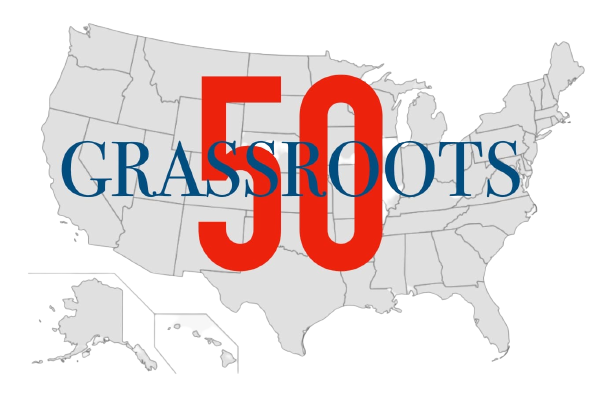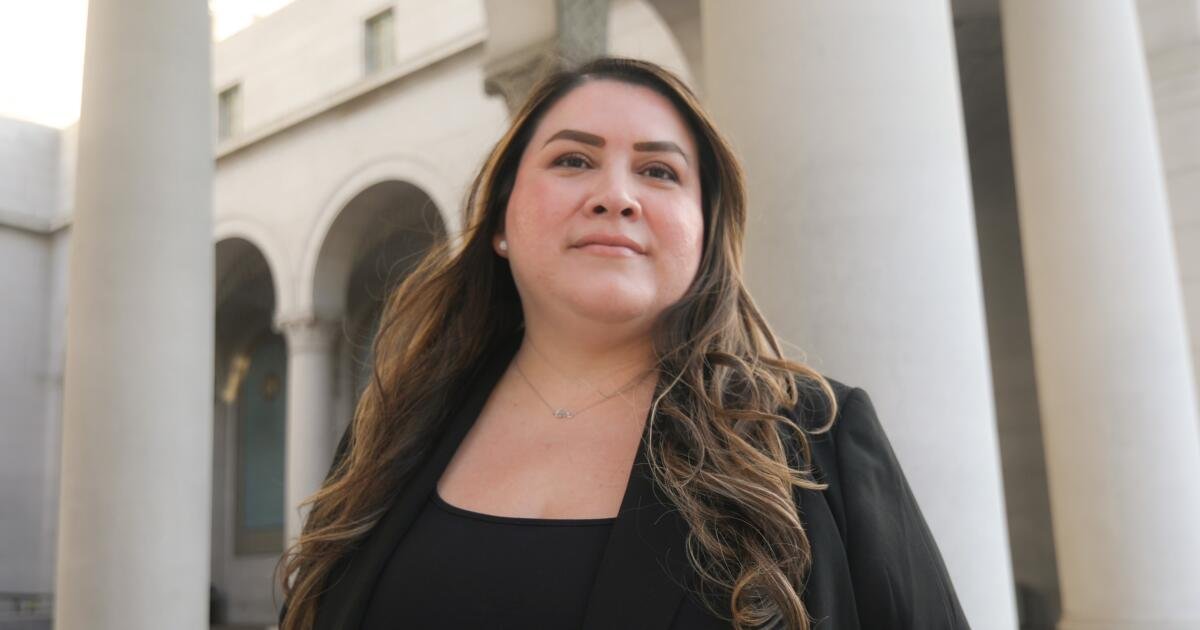Xochitl Pedraza moved to San Bernardino County eight years ago. After 30 years in the city, unincorporated Bloomington offered her a rural community where she could buy an acre of land and raise chickens.
But Pedraza's neighborhood has become more industrialized in recent years, as developers turn large swaths of land along the 10 Freeway into an e-commerce logistics corridor, connecting goods shipped to Southern California ports with online shoppers across the country. Proponents of the development say it will bring jobs and improved infrastructure, but many residents who live in its shadow lament the pollution, traffic congestion and disruption to their neighborhoods.
There was already an avocado distribution center across the street from Pedraza's house, but now an Amazon fulfillment center is on the corner and “trucks just keep coming,” Pedraza said, an incessant blaring of beeps and horns piercing the soundproof windows.
She and her 8-year-old grandson suffer from dry eyes, stuffy nose and a chronic dry cough, symptoms she attributes to dust from the warehouse construction and ozone pollution in the area.
A bill on Gov. Gavin Newsom's desk would establish siting and design standards for industrial warehouses, which supporters say would better protect the health of residents like Pedraza.
State Assemblyman Juan Carillo (D-Palmdale), who co-authored the bill, said it was a “very delicate compromise” that came about after lengthy negotiations by a working group that included representatives from labor, health, environment and business.
Nevertheless, the bill has drawn stiff opposition from a range of environmental, community and civic groups across the state, who object that it was crafted in secret on the final days of the session and argue that it fails to hold warehouse developers to high standards.
Beginning in 2026, AB 98 would prohibit cities and counties from approving new or expanded distribution centers unless they meet certain standards: New warehouse developments must be located along major or local roads with primarily commercial uses, and warehouse sites must be located several hundred feet away from so-called “sensitive sites” such as homes, schools or health care facilities.
Additionally, if a developer demolishes a home to build a warehouse, the bill would require them to build two new affordable housing units for each one demolished. Developers would have to pay 12 months' rent to displaced tenants.
The state's “warehousing hotspots” — Riverside County, San Bernardino County and 12 cities in the Inland Empire — have until 2026 to enact some regulations, two years earlier than the rest of the state.
While some labor unions support the bill, many environmental, business and community groups oppose it. Several cities also oppose the bill because it would require comprehensive plan updates that could result in one-time costs to cities and counties ranging from tens to hundreds of millions of dollars, according to a Senate Appropriations Committee analysis.
Environmentalists are particularly concerned about the bill's setback requirements for projects that would build warehouses larger than 250,000 square feet within 900 feet of homes, schools, parks or medical facilities.
In those cases, the bill would require truck loading docks to be located at least 300 feet from property lines in areas designated for industrial use and 500 feet from property lines in areas not designated for industrial use. Warehouses would also have to comply with design and energy efficiency standards.
Pedraza, who lives in Bloomington, said the required distance isn't a large enough buffer, and the rule doesn't take into account truck traffic and pollution issues that are worsening in overburdened areas like Bloomington.
“The whole area is now surrounded by warehouses,” she said. “No matter how far away we are, they affect us.”
The bill would simply enshrine current warehouse development practices into law and undermine local efforts to seek greater restrictions recommended by state agencies, said Andrea Vidaure, a senior policy analyst with the state Assembly. People for Environmental Justice In San Bernardino.
in 2022 Report In terms of best practices for warehouse projects under state environmental law, the state Attorney General's Office recommends that a warehouse facility's property lines be located at least 1,000 feet away from the property lines of sensitive areas such as homes or schools. State Air Resources BoardIn 2005, they estimated that pollutant concentrations dropped by 80 percent about 1,000 feet from a distribution center.
“If this bill passes, it's basically saying, 'business as usual, let's keep building,'” Vidaurre said. “We're going to see warehouses continue to be built across from homes and schools because the law allows it.”
Rep. Eloise Gomez Reyes (D-Colton), another co-author, acknowledged at a Senate committee hearing last week that while AB 98 would preserve jobs and establish warehouse standards, “it's not a perfect bill.”
she The bill was submitted Earlier this year, the bill would have allowed warehouses to be built within 1,000 feet of schools, housing, medical facilities and other sensitive sites, but only if they were provided with a minimum 750-foot setback and certain mitigation measures. The bill was in its first committee hearing.
Gomez Reyes said AB 98's distancing requirements could serve as a minimum standard.
“We do not believe that the bill's sensitive receptor limitations adequately protect our most vulnerable communities,” Gomez Reyes said during the hearing, “but it is important to note that these are only minimum restrictions, and there is nothing in this bill to prevent cities and advocates from lobbying local cities and counties to implement even stricter standards.”
Carla Cervantes, who started the Mead Valley Clean Air Coalition earlier this year to fight the proliferation of warehouses in the unincorporated Riverside County community of about 20,500 people, said developers won't agree to setbacks beyond those required by law.
Riverside County already recommends that warehouse designs allow for at least 300 feet between significant property lines and the nearest dock door, and while it's “very rare” for developers to agree to larger setbacks, they sometimes suggest larger landscape buffers to block the facility from view, she said.
If AB 98 becomes law, “it will be even harder for us to ask for better things,” she said.
Governor Newsom has until September 30 to decide whether to sign or veto the bill.
This article is from The Times Fairness Reporting Initiative, Funded James Irvine FoundationInvestigate the challenges facing low-income workers and efforts to address them. Economic inequality in California.
















